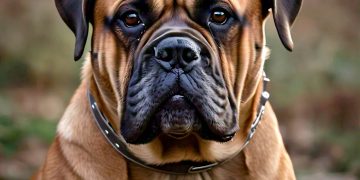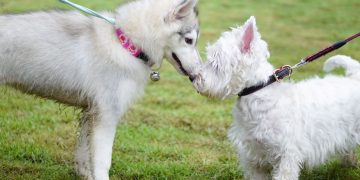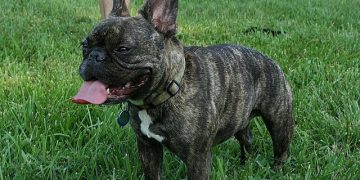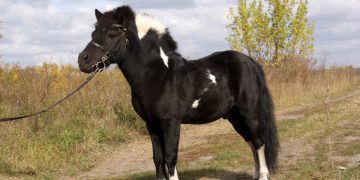The American Miniature Horse, known for its small stature and charming disposition, has become one of the most beloved breeds in the world. Developed for companionship, the American Miniature Horse is treasured for its intelligence, versatility, and suitability as both a pet and a show horse. In this comprehensive article, we’ll explore the history, characteristics, uses, and care requirements of the American Miniature Horse, as well as some tips on training and managing this unique breed.
Table of Contents
- Introduction to the American Miniature Horse
- Historical Background and Development of the Breed
- Physical Characteristics of the American Miniature Horse
- Temperament and Personality Traits
- Primary Uses and Abilities of the American Miniature Horse
- Care Requirements: Health, Feeding, and Grooming
- Training and Handling Tips
- Frequently Asked Questions (FAQ)
- Conclusion: The Appeal of the American Miniature Horse
1. Introduction to the American Miniature Horse
The American Miniature Horse, often referred to simply as the Mini, is a small equine breed developed specifically for its petite size and pleasant temperament. Despite their small stature, Minis are true horses, with the same anatomical structure as their full-sized counterparts. This breed is recognized for its adaptability, making it a popular choice for families, breeders, and enthusiasts who appreciate its versatility and endearing personality.
Today, American Miniature Horses are found in a variety of settings, from family farms to equestrian events and even as therapy animals. The breed’s distinct look and friendly nature make it an excellent choice for anyone seeking a manageable and affectionate horse.
2. Historical Background and Development of the Breed
The American Miniature Horse traces its roots to the 17th century when small equines were selectively bred in Europe for their size. The development of these horses was influenced by several breeds, including Shetland Ponies, Dartmoor Ponies, and small Thoroughbreds, among others. Over time, these compact horses were brought to the United States, where they were further refined into the breed we recognize today.
Key Historical Points:
- European Beginnings: In Europe, small horses were bred for royalty, novelty, and as companions for children. Some were also used as working animals in mines, where their small size was advantageous.
- Importation to America: By the 19th century, miniature horses were imported to the United States and gradually became popular among American breeders.
- Establishment of the Breed Standard: The American Miniature Horse Association (AMHA) was established in 1978 to standardize the breed and maintain its pedigree records, setting a maximum height of 34 inches at the withers for official registry.
Today, American Miniature Horses are bred according to strict standards to maintain their small stature, correct conformation, and desirable temperament, ensuring the breed’s longevity and popularity.
3. Physical Characteristics of the American Miniature Horse
Though small, the American Miniature Horse is a well-proportioned and sturdy animal, reflecting the features of full-sized horses in a petite form.
- Size and Build: The AMHA standard specifies a height limit of 34 inches at the withers, while other organizations, such as the American Miniature Horse Registry (AMHR), allow horses up to 38 inches.
- Head and Neck: Minis have a proportionally refined head with expressive eyes and a short, wide muzzle. Their necks are arched and well-set, adding to their attractive, balanced appearance.
- Body Structure: With a compact body, straight back, and muscular hindquarters, Miniature Horses have the same anatomical proportions as larger horses, albeit on a smaller scale.
- Coat and Color: American Miniature Horses come in a wide range of coat colors and patterns, including bay, black, chestnut, pinto, palomino, and more. Their coats can be either smooth or shaggy, depending on the season and the individual horse.
Despite their diminutive size, American Miniature Horses exhibit the grace and poise typical of larger horse breeds, with an added element of charm and manageability.
4. Temperament and Personality Traits
One of the standout qualities of the American Miniature Horse is its friendly and outgoing personality. Minis are known for being:
- Intelligent: These horses are quick learners and are known to be highly trainable, adapting well to commands and structured routines.
- Affectionate and Social: Minis are friendly animals, often forming strong bonds with their owners. They are social and enjoy human companionship, making them excellent family pets.
- Playful and Energetic: Despite their size, Minis are full of energy and enjoy interactive play. They can be spirited and even a bit cheeky, which endears them to their handlers.
- Good with Children and Other Animals: Their gentle and adaptable nature makes Minis suitable for families with children, and they often get along well with other farm animals and pets.
The temperament of the American Miniature Horse has contributed significantly to its success as a therapy animal and companion, in addition to its popularity as a show and performance horse.
5. Primary Uses and Abilities of the American Miniature Horse
American Miniature Horses are incredibly versatile and can be found in a variety of roles and settings.
- Companionship: Minis are popular as companion animals due to their manageable size, friendly demeanor, and adaptability. They make excellent pets for families and can be kept in smaller spaces compared to full-sized horses.
- Therapy and Service Animals: Due to their calm nature, Minis are commonly used as therapy animals, visiting hospitals, nursing homes, and rehabilitation centers. Their small size and gentle disposition make them ideal for close interaction with people in need of comfort and companionship.
- Driving and Cart Pulling: Many Miniature Horses are trained to pull carts, providing a fun and safe activity for both children and adults. Driving competitions for Minis are popular at horse shows, where they demonstrate their agility and coordination.
- Showing and Competitions: Minis participate in a variety of show events, including halter classes, obstacle courses, liberty classes (where they perform without a handler), and even jumping.
- Educational Programs: Due to their small size and engaging nature, Minis are frequently used in youth programs and educational events, helping children and novice handlers learn about horse care and training.
The adaptability of the American Miniature Horse ensures that it remains a popular choice for diverse equestrian activities, from personal companionship to competitive showing.
6. Care Requirements: Health, Feeding, and Grooming
Despite their size, American Miniature Horses require diligent care to maintain their health and well-being.
- Diet and Feeding: Minis have different nutritional needs than larger horses, and they require smaller portions of high-quality hay, along with grains if recommended by a vet. Care should be taken to avoid overfeeding, as Minis are prone to obesity and metabolic issues.
- Exercise Needs: Minis need regular exercise to prevent obesity and maintain muscle tone. Light activities such as walks, playtime, and driving are suitable.
- Grooming: Minis have similar grooming needs to full-sized horses, requiring regular brushing, mane and tail care, and hoof cleaning. Regular hoof trimming is essential to prevent issues associated with compact hooves.
- Health Concerns: Minis are susceptible to some specific health issues, including obesity, colic, and metabolic disorders. Routine veterinary check-ups, vaccinations, and dental care are essential to keep them in optimal health.
When provided with proper care, American Miniature Horses can enjoy a lifespan of 25 to 35 years, making them a long-term companion for dedicated owners.
7. Training and Handling Tips
Training a Miniature Horse requires patience, consistency, and understanding of their unique temperament.
- Positive Reinforcement: Minis respond well to positive reinforcement techniques. Rewards such as treats or praise can motivate them during training.
- Socialization: Early socialization with humans, other horses, and animals helps Minis become well-adjusted and confident.
- Clear Commands: Minis are intelligent and quick to pick up on commands, so handlers should use consistent cues for each command and avoid sending mixed signals.
- Respect Boundaries: Although small, Minis should be treated with respect and trained like any other horse. Establishing boundaries helps prevent undesirable behaviors and ensures they remain responsive to commands.
With their intelligence and eagerness to learn, Minis excel in obstacle courses, cart pulling, and other activities that engage their minds and bodies.
8. Frequently Asked Questions (FAQ)
Q1: Are American Miniature Horses good for children?
Yes, American Miniature Horses are gentle and social, making them excellent companions for children. However, they still require supervision and appropriate handling.
Q2: How much space does a Miniature Horse need?
Minis require less space than a full-sized horse but still need an area to roam and exercise. A small paddock or pasture is ideal.
Q3: Can American Miniature Horses live indoors as house pets?
While Minis can adapt to being around the home temporarily, they are best suited to outdoor environments. They benefit from fresh air, exercise, and socialization with other horses.
9. Conclusion: The Appeal of the American Miniature Horse
The American Miniature Horse is a captivating breed that offers a unique combination of charm, intelligence, and adaptability. From show rings to therapy sessions, these small horses make a big impression, showcasing their versatility and endearing personalities. With proper care and attention, an American Miniature Horse can bring joy, companionship, and a touch of equestrian elegance to any family or equine enthusiast.
Their unique size, trainability, and suitability for various activities make them a favorite choice for horse

























